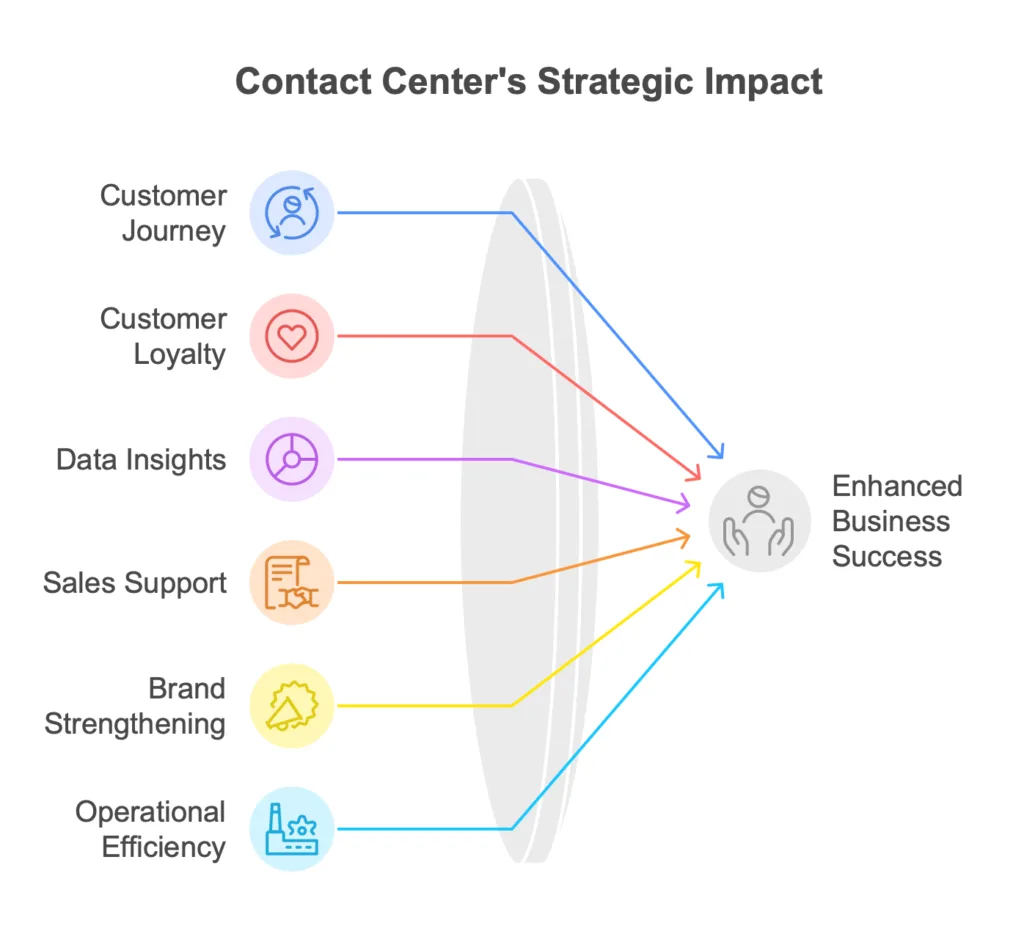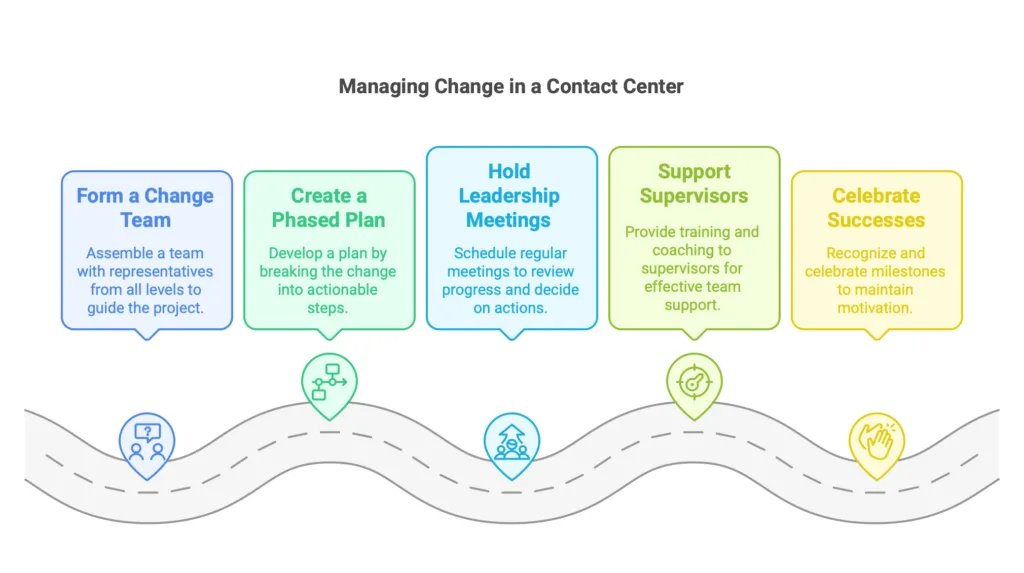This is the second part of a six-part article series. You can read the previous article through this link. Here, we focus on leadership commitment and its importance in driving change.
Leadership commitment is crucial for the success of any change initiative in a contact center environment. This involves not only allocating resources but also actively participating, leading by example, and making strategic decisions. Leadership defines the direction but must also ensure seamless execution of change at the operational level.
If you wish, you can download the entire article series in advance through the form at the end of the article.
Why Is the Contact Center Critical to Overall Business Success?
- The Core of the Customer Journey: The contact center often serves as the first and last touchpoint with customers, shaping their satisfaction through first impressions and lasting memories.
- Impact on Customer Loyalty: High-quality customer service boosts loyalty, leading to repeat purchases and reduced customer churn.
- A Data Goldmine: Contact centers collect valuable insights into customer needs, challenges, and expectations that can inform business development.
- Support for Sales: Excellent customer service drives upselling and cross-selling opportunities. Properly managed, sales can grow by 30–100% within a few months. What could this mean for your revenue?
- Strengthening the Brand: A positive customer experience reinforces the company’s brand image.
- Operational Efficiency: A well-managed contact center reduces repeat inquiries and improves process efficiency, saving costs.
- Employee Satisfaction: Improving the contact center environment also benefits employee well-being, resulting in better customer experiences and reduced turnover.

How Can Bord of Directors Practically Commit to Change in a Contact Center?
- Clear Vision and Goals
- Define the Purpose of Change: Why is the change necessary? Example: “We aim to increase customer satisfaction to 90% by the end of the year.”
- Align with Business Strategy: Show how improving the contact center supports broader business objectives, such as customer loyalty or sales growth.
- Active Participation
- Engage with Operations: Regularly visit the contact center, talk to employees, and listen to their feedback.
- Join Training Sessions: Lead by example by participating in coaching and training sessions that support the change.
- Ensure Resources and Tools
- Provide the Right Tools: Invest in solutions like QualityDesk to support continuous learning, coaching, and automated monitoring.
- Enable Training: Ensure that employees and supervisors receive the necessary training to succeed in the change process.
- Foster Transparency and Communication
- Keep Everyone Informed: Organize regular status updates to share progress, achievements, and challenges.
- Build Trust: Be transparent about the change process, acknowledging and addressing obstacles honestly.
- Evaluate and Adapt
- Monitor Progress: Use metrics and analytics to assess how the change impacts results.
- Update Plans as Needed: Be ready to modify approaches if something isn’t working. Continuous learning applies to leadership as well.
Steps for Managing a Change Project
- Form a Change Team: Include representatives from all levels (leadership, supervisors, employees) to guide the project.
- Create a Phased Plan: Break the change into actionable steps, such as goal setting, training, tool implementation, and continuous evaluation.
- Hold Leadership Meetings: Schedule regular meetings to review progress and decide on necessary actions.
- Support Supervisors: Supervisors implement changes daily. Provide them with training and coaching to effectively support their teams.
- Celebrate Successes: Recognize and celebrate even small milestones to maintain motivation throughout the process.

Conclusion
Leadership commitment is vital for the success of any change project in a contact center. A clear vision, resource allocation, and continuous communication provide the foundation, but true success requires active participation and the ability to adapt along the way. The contact center is not just a support function—it is a strategic asset that directly influences the success of the entire business.
The next part of the article series is now available to read through this link: Coaching as a Tool: How to Build Lasting Change in a Contact Center Environment.




